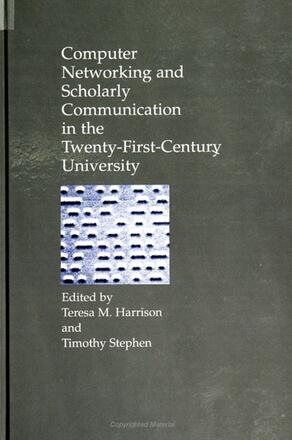
Computer Networking and Scholarly Communication in the Twenty-First-Century University
Alternative formats available from:
Description
This book explores the various ways in which computer networking, and more specifically the Internet, is changing the practices, the structure, and the products of academic scholarship. It considers research, teaching, and dissemination of knowledge across a range of disciplines in the humanities, sciences, and social sciences in order to identify particular uses of networking that will come to constitute the academic world of the future.
The contributors consider such themes as how networking and particular software environments can be used to support inquiry within research specialties and how scholars in diverse disciplines respond to the availability of new networked channels of scholarly communication. In the context of education, they argue that networking can reconfigure the process of learning, encompassing new audiences, new relationships with teachers, and new learning skills adapted for the network environment. The products of such new configurations are also discussed. The future of electronic journal publication is considered by innovators who have designed some of the first experiments in refereed electronic journal publication. Finally, the new responsibilities and roles of the academic library and academic publishers in a networked environment are debated.
Teresa M. Harrison is Associate Professor of Communication in the Department of Language, Literature, and Communication at Rensselaer Polytechnic Institute. Timothy Stephen is Associate Professor of Communication in the Department of Language, Literature, and Communication at Rensselaer Polytechnic Institute. Teresa M. Harrison and Timothy Stephen are co-directors of Comserve, an online scholarly service for faculty and students in communications studies, for which they won the Council of Communication Libraries' 1993 "Prize for Excellence in Information Services."
Reviews
"I think this book is quite unique in that it focuses on the intersection of Computer-Mediated Communication (CMC) and the academy. The topic is not only crucial to the university of the twenty-first century but it is crucial to the evolution of all social institutions worldwide." -- Stephen Doheny-Farina, Clarkson University
"The breadth of examples and case studies represented here make this book of compelling interest for anyone interested in CMC and networking, their impacts on scholarship and education (including the institutions of education, such as the journal, the library, and the university press), and in philosophy of technology as such. I expect this will quickly become one of the three or four volumes which constitute standard reading in the field of CMC." -- Charles Ess, Drury College